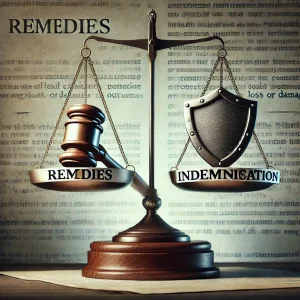Introduction
The 2016 presidential election exposed the fear and hatred that simmers just beneath the surface in some Americans. The Ku Klux Klan endorsed Trump. Trump stirred up fears of immigrants, Jews, Muslims, and blacks. Trump bragged about sexual assaults. Trump’s Vice President, Pence, a smug, self-righteous evangelical, is openly hostile to gays. Many conservative leaders believe rape is just a risk inherent in being a woman. Many conservative politicians are hostile to any person speaking out against their policies. Their behavior, and similar behavior by some of the supporters, has emboldened bullies and haters.
In this atmosphere of fear and hate we must resolve that we will protect those unable to protect themselves. If we want to make America great again, the first step is to show we believe in equality, freedom of speech, freedom of religion, and doing what is right. We must show we will not tolerate the abuse of our fellow citizens or visitors to our once great country.
You may encounter a situation where you must decide whether to intervene to protect another. This article offers some thoughts on how to analyze such situations and intervene if you decide to intervene.
Nothing is foolproof. Intervention carries risk. There are no guarantees.
The Four A’s
I think of four stages to intervention – awareness, assessment, approach, and action. But each situation is different and you may encounter a situation that requires you to make an instant assessment and take immediate action.
Awareness
If you want to help others, you must be alert to situations where others need help. A good rule of thumb is to trust your gut. If you sense something is wrong, it probably is. Some things that may indicate a bullying or threatening situation is present or may develop include:
Loud voices or yelling
Abnormal patterns of movement such as people standing still while others are moving
One person abnormally close to another – “in their space.”
One person touching or grabbing another
One person running from another
Physical threats such as someone making a fist or throwing things
Unusual gestures such as flailing arms
Assessment
If you believe a situation exists or may develop, you must assess the situation. The time available for assessment will depend on the circumstances. In some situations, you may have to make an instant assessment. Some factors to consider in making your assessment are:
How great is the threat to the other person and to yourself?
How immediate is the threat? (Is there time to call 911?)
Is it verbal or physical?
How agitated does the aggressor appear to be? (Is there still time to defuse things?)
Does the aggressor have a weapon? (A man wearing a fanny pack with the pouch in front probably has a handgun in it).
Do you have a weapon or easy access to a weapon?
How many aggressors are there?
How many bystanders are there that might lend a hand?
Once you assess the situation, if you don’t feel safe intervening in any way, call 911. You should remain on the scene so you can provide a statement to law enforcement. If you are not ready to call 911 or don’t think you have time due to the urgency of the situation, go to the next step.
Approach
1. Stop and Look. If you see a concerning situation, before you get closer to the situation, stop, and look at the people involved. Often the aggressor see you, recognize that they are drawing attention, and calm down.
“What are you looking at?” Sometimes the aggressor will stare back at you and say, “What are you looking at?” It’s a rhetorical question. The aggressor knows darn well what you are looking at and why you are. Say nothing, hold your ground, and continue to look directly at the situation. If you move closer the aggressor may consider it challenge. If you back away, the aggressor may consider at sign of weakness or fear. You may want to take out your cell phone and prepare to dial 911. You may want to begin recording the incident on your cell phone.
“This is none of your business.” Sometimes the aggressor will stare at you and say, “This is none of your business.” Again, the best response is to hold your ground and say nothing. Just stand still and continue to demonstrate your concern. If you must say something, you can say, “Sir, it is my business because I’m concerned for both of you.” You might also add something like, “Look, I already took a picture of you and sent it to my friend. Let’s just stop and call this done and move our separate ways.”
2. Verbal De-escalation. If the situation has not yet become physical, you may be able prevent that by using verbal de-escalation techniques. The idea is to show concern and empathy to prevent the aggressor from becoming more agitated. Some examples:
“It looks like you folks are having a bad day. Is there anything I can do to help?”
“I can see you are upset, let’s all take a deep breath and relax before this gets out of hand.”
3. Command and Consequence. If verbal de-escalation does not work, you must give a command and consequence:
“Sir, if you don’t calm down, I will call the police.”
“Sir, leave him alone or I will call security.”
Have your phone out be ready to dial when you say this. Be far enough away that the aggressor cannot reach you to stop you.
4. Positioning. As all this is going on, if you believe you may have to intervene physically and you intend to do so, you should gradually get closer to the aggressor so you will be able to close the distanced quickly. You can converse with aggressor as you slowly approach. You can put your hands up with your palms open in a defensive posture as you approach to show you don’t want any trouble. (If your hands are already up with your palms open, it’s very easy to turn those open palms into fists if you must).
Action
If the situation appears to be escalating and you conclude you must take action, here are some possible actions:
1. Dial 911. If you have a phone, dial 911. State your name, your location, and what you are seeing that concerns you. Describe the others involved, and be sure to say what the aggressor is wearing so the officers that respond know what to look for. If you don’t have a phone, ask to borrow someone else’s phone.
2. Scream. Bullies do not like attention and they especially don’t like police officers. Start screaming, “Police!” Your screams will attract the attention of others, drawing a crowd, which is exactly what the aggressor does not want.
3. Physical Intervention. The law allows you to use reasonable force to protect yourself or another. If you are not an experienced fighter, the general idea is to use the hard surfaces of your body (knuckles, knees, heels, elbows, palm heels) against the soft portions of the aggressor’s body (groin, eyes, throat, vital organs). Also, consider whether you have a weapon available. A belt with a metal buckle can be a weapon. A cane can be a weapon. A cup of hot coffee can be a weapon. A purse or backpack can be a very effective weapon.
Conclusion
Most bullies are cowards. Just as a lion always attacks the weakest gazelle – the one straggling behind the pack – bullies pick on the weak. If you stand up to an aggressor, the aggressor usually backs down. Most Americans are good people. If you demonstrate leadership, others will back you up. To ignore bullying is to encourage it. We can no longer ignore it and pretend it is not our problem.






All We Do Is Move Stuff